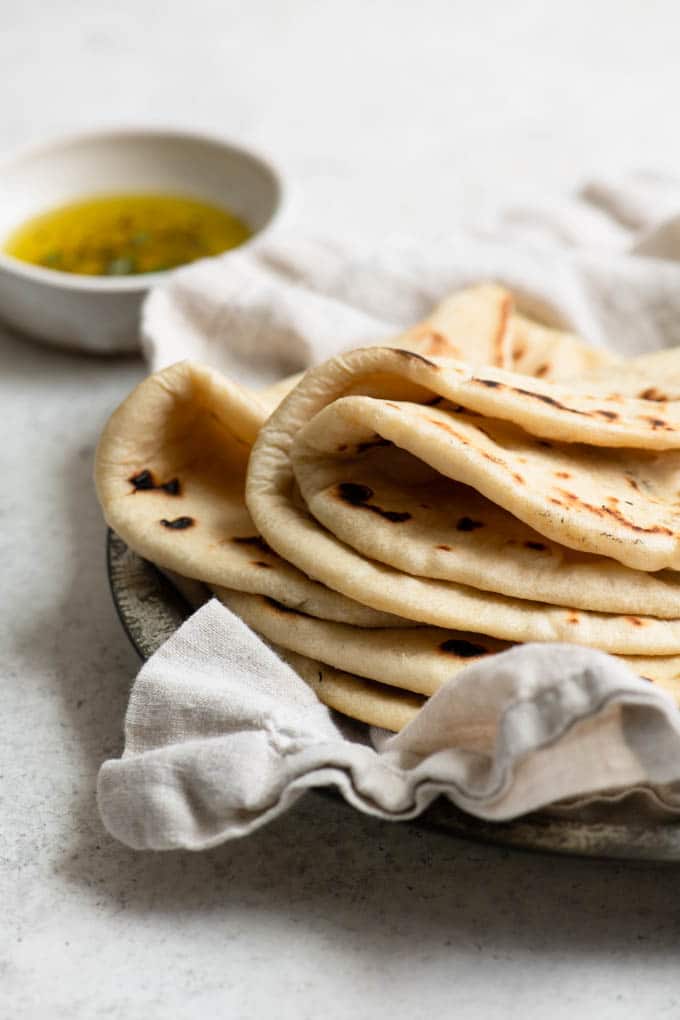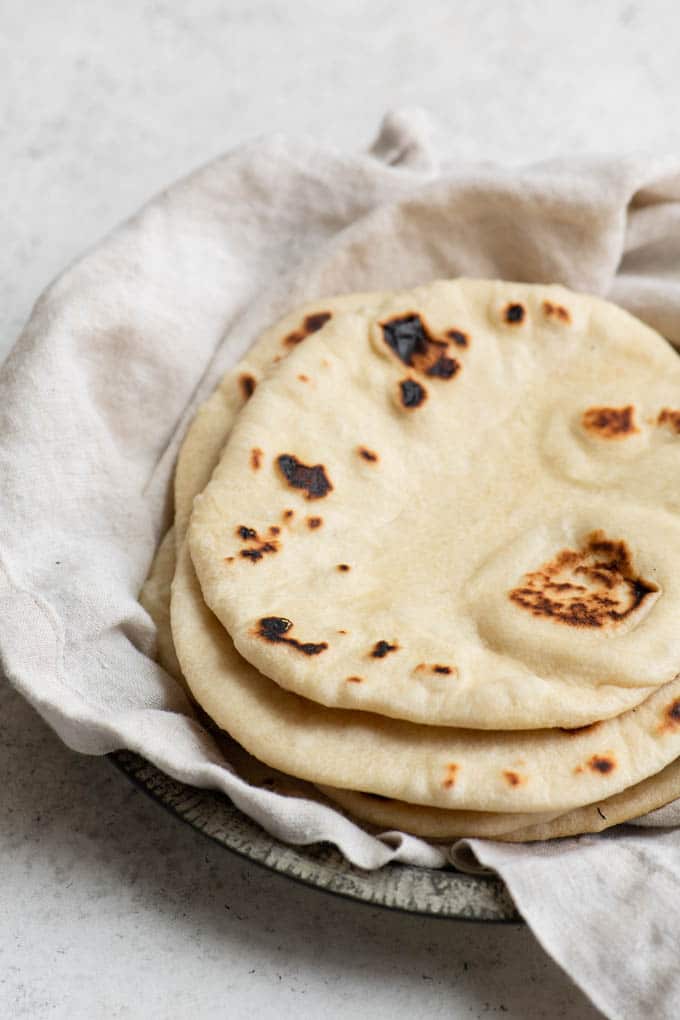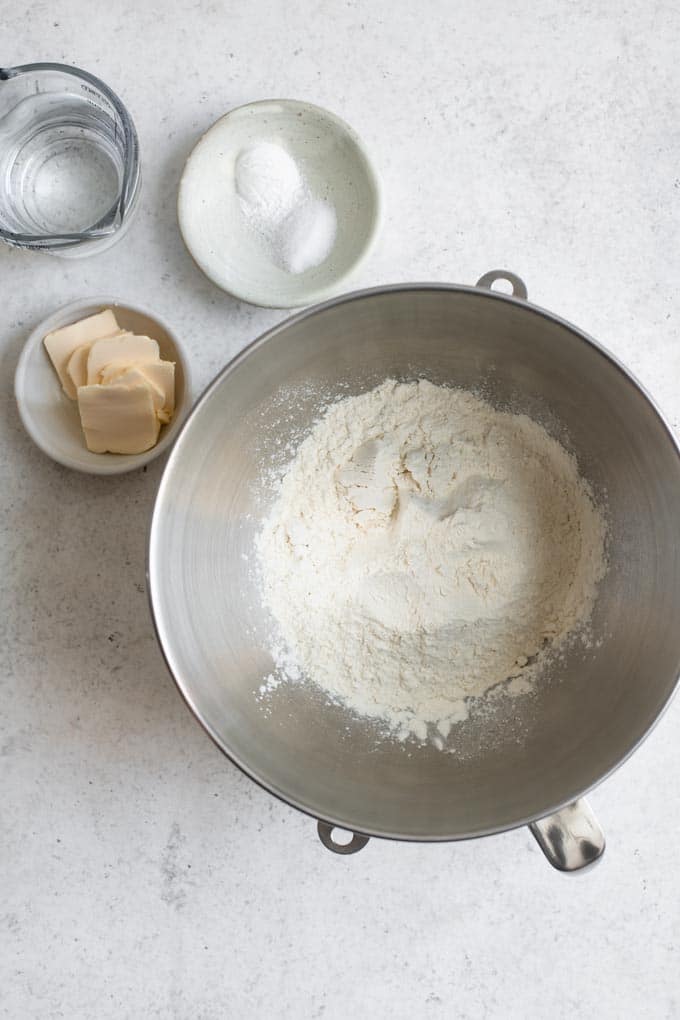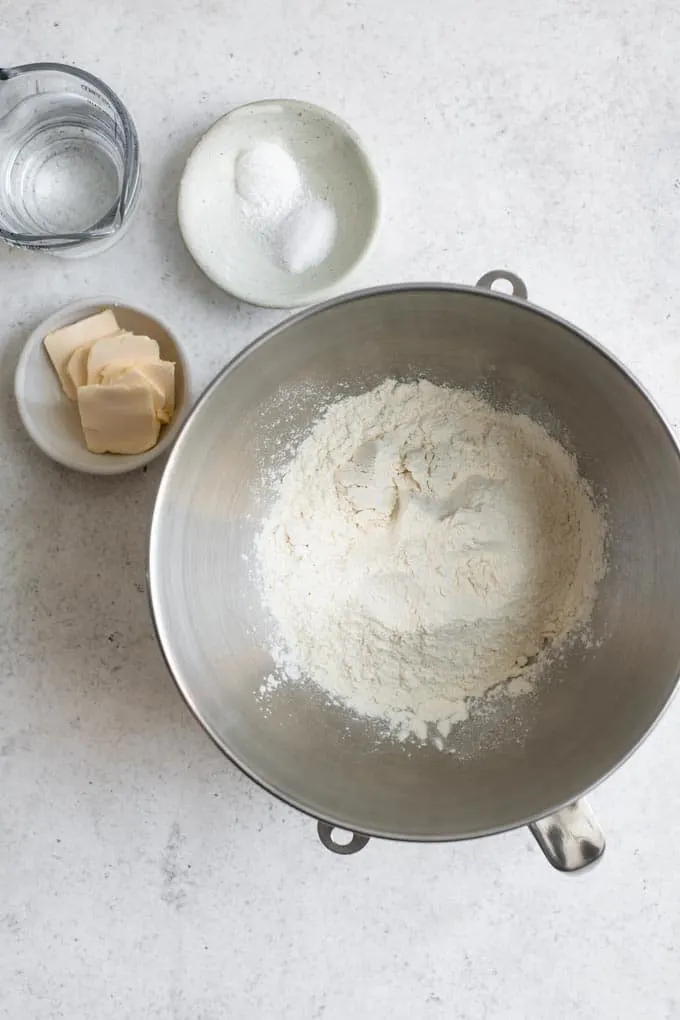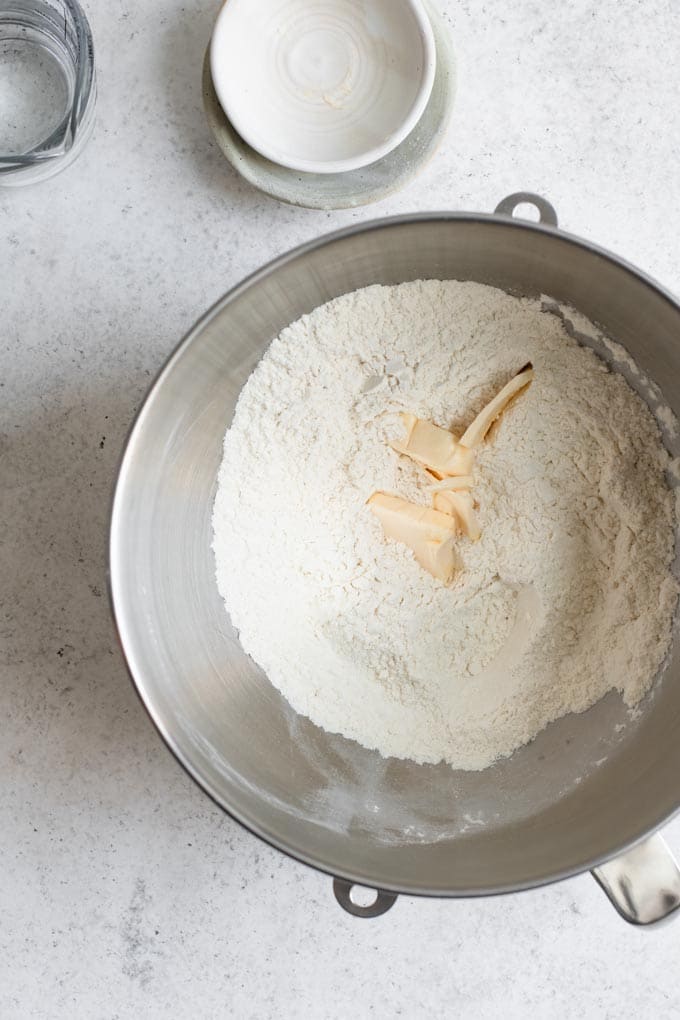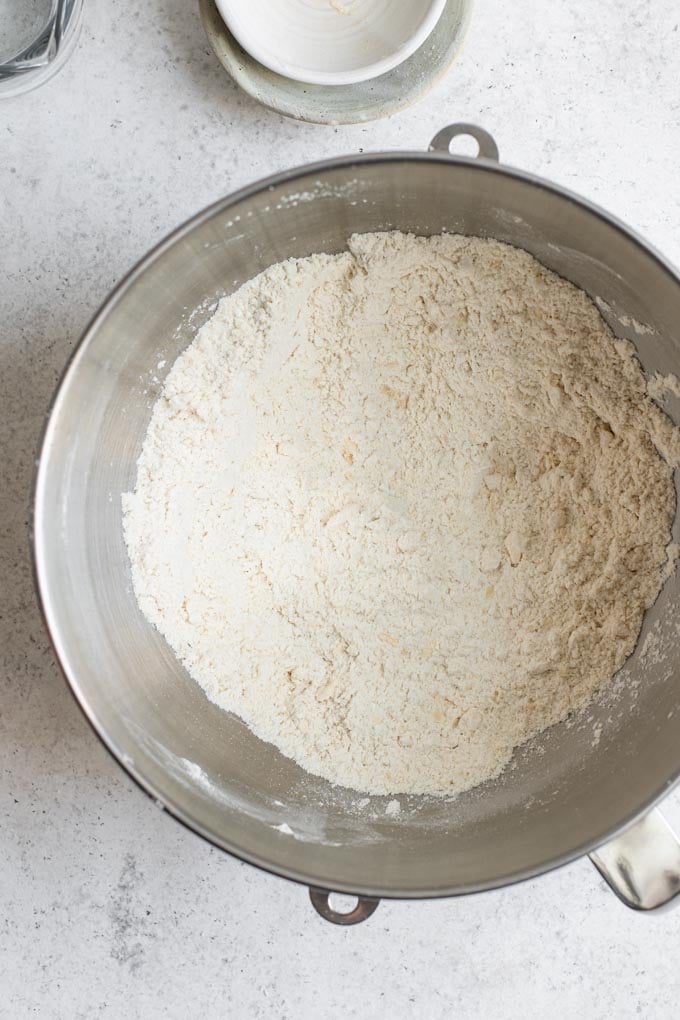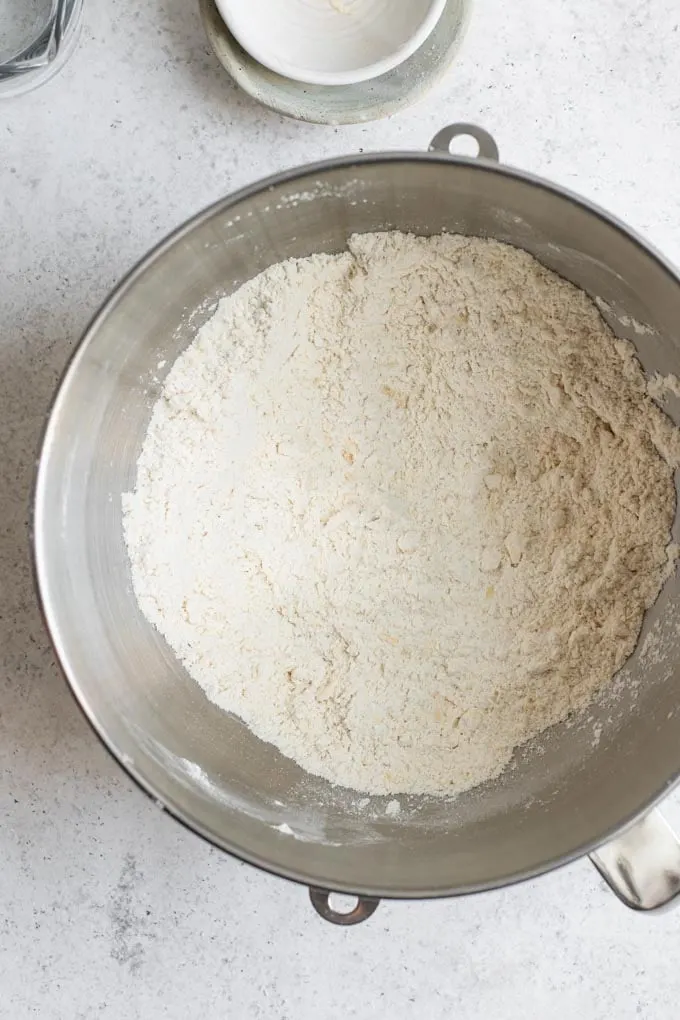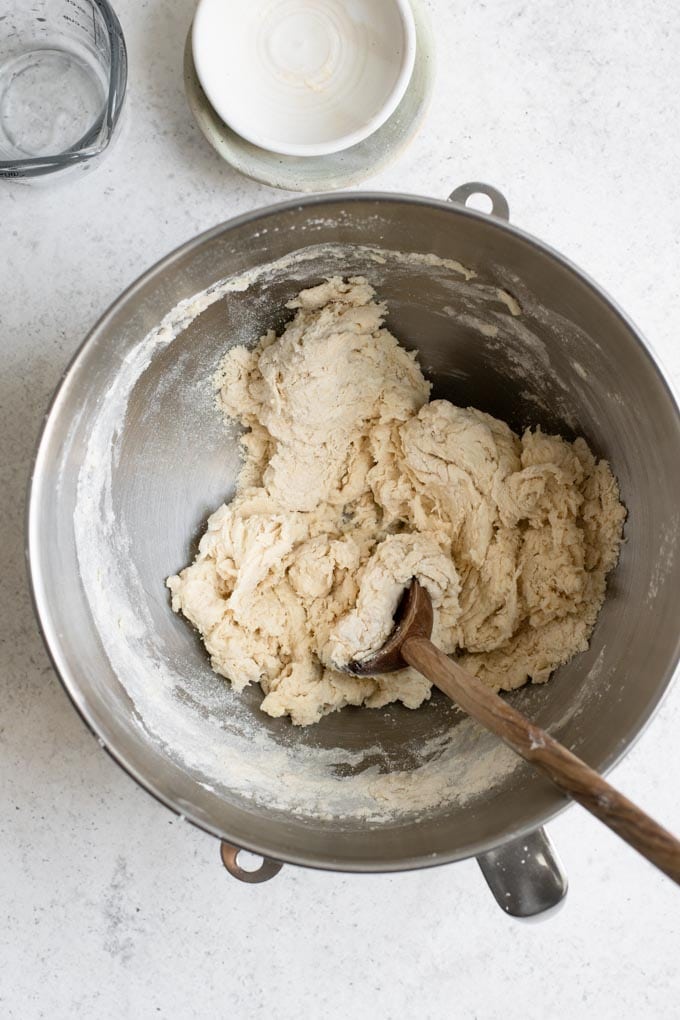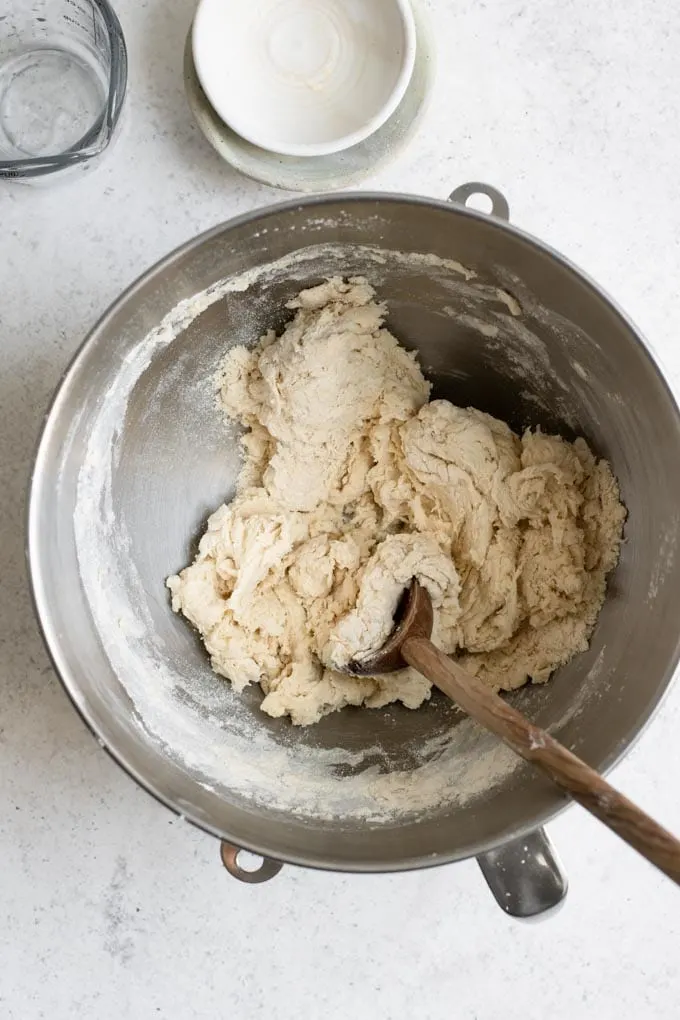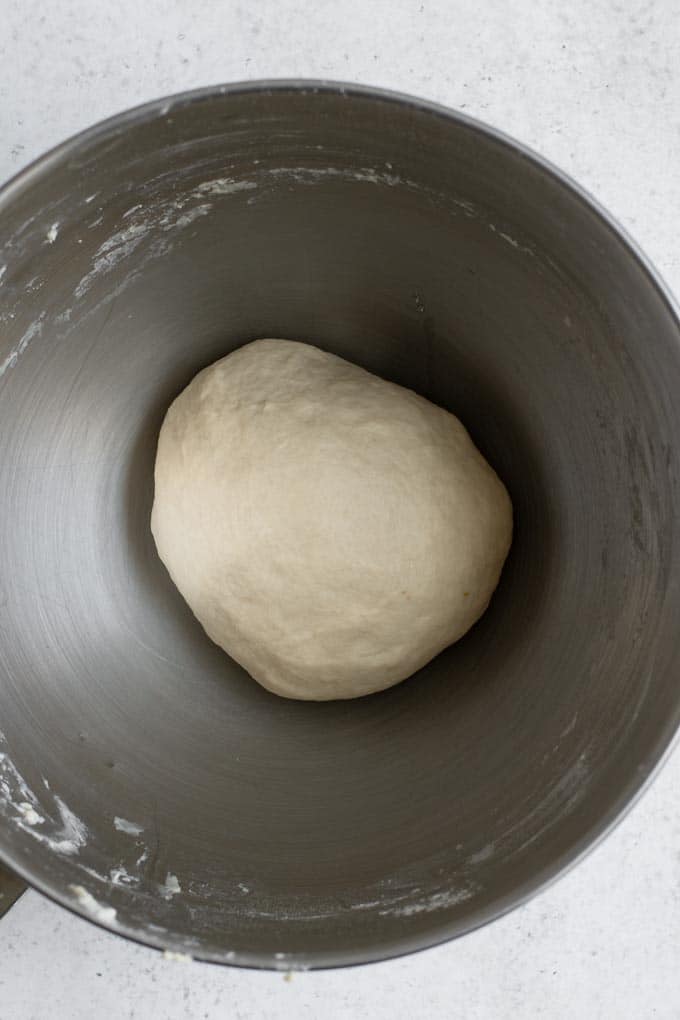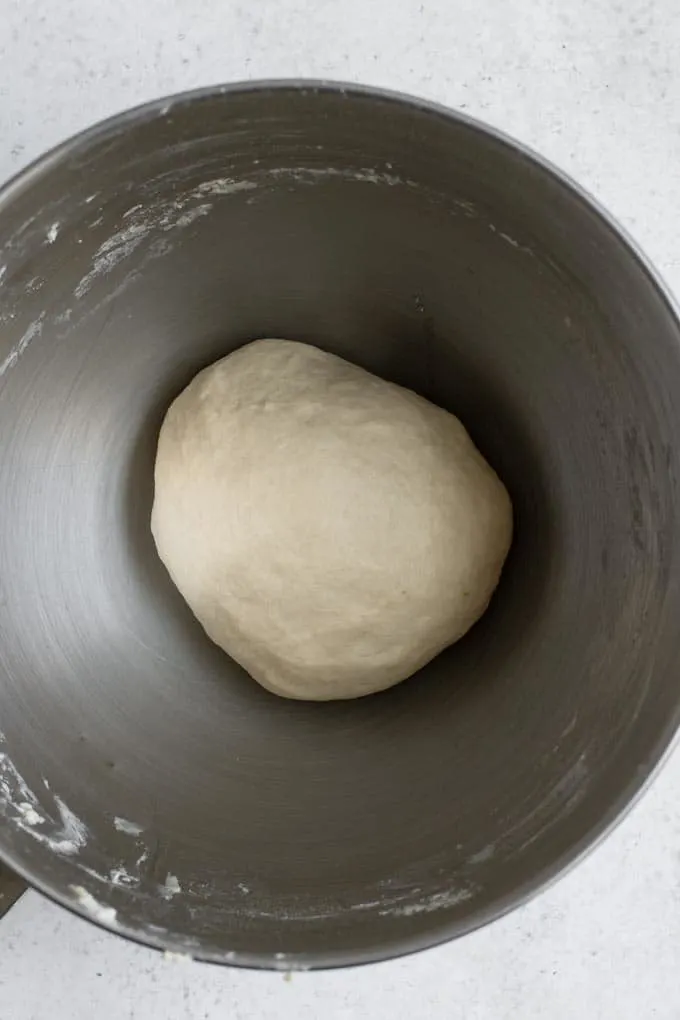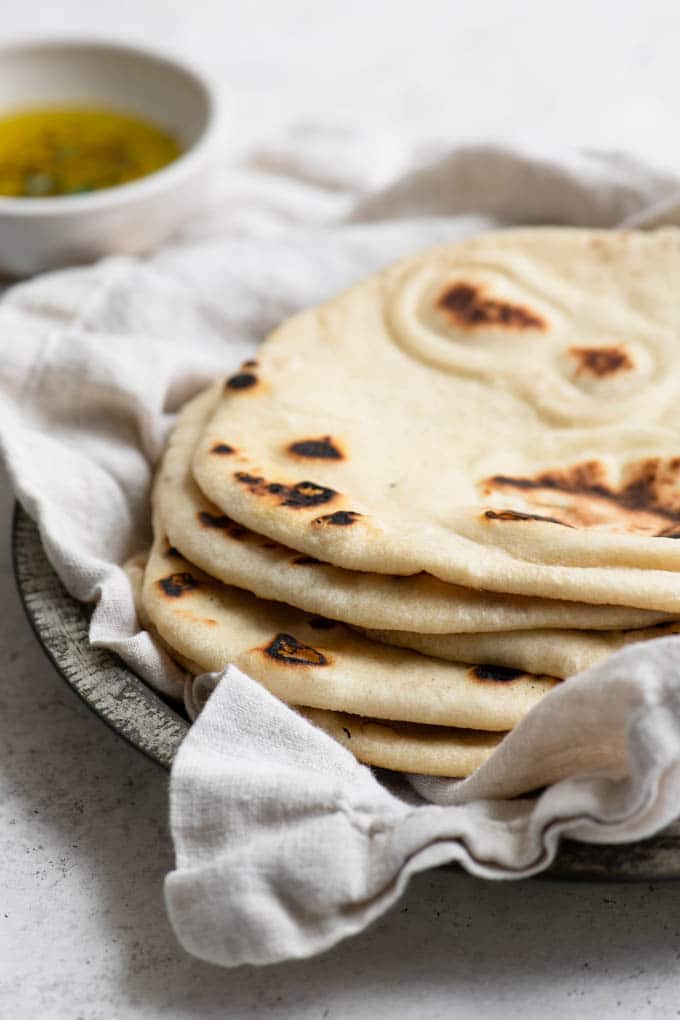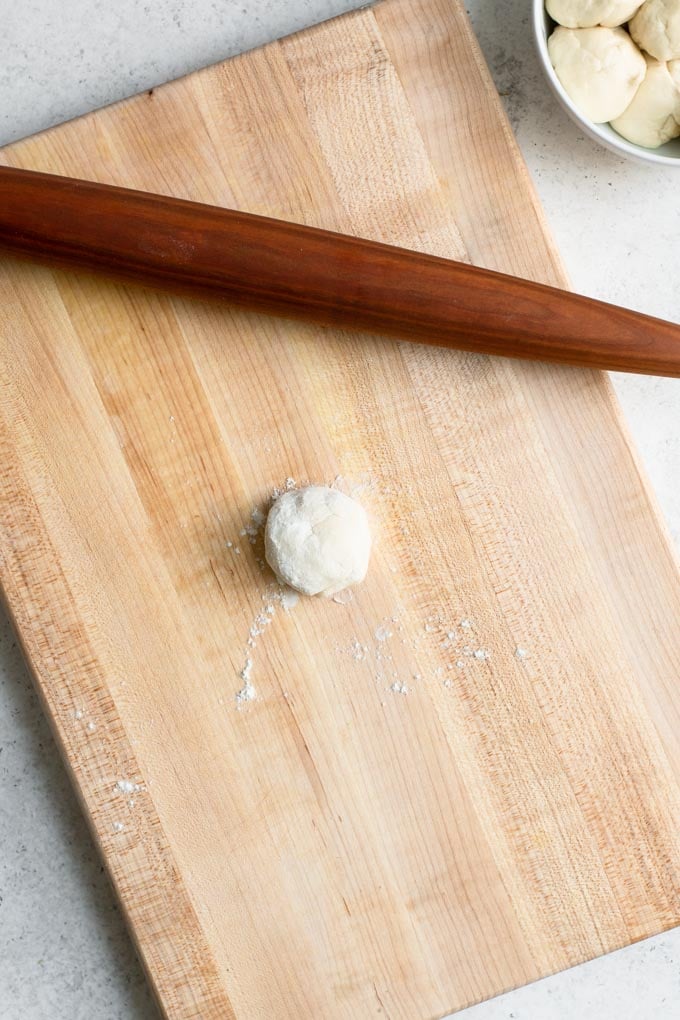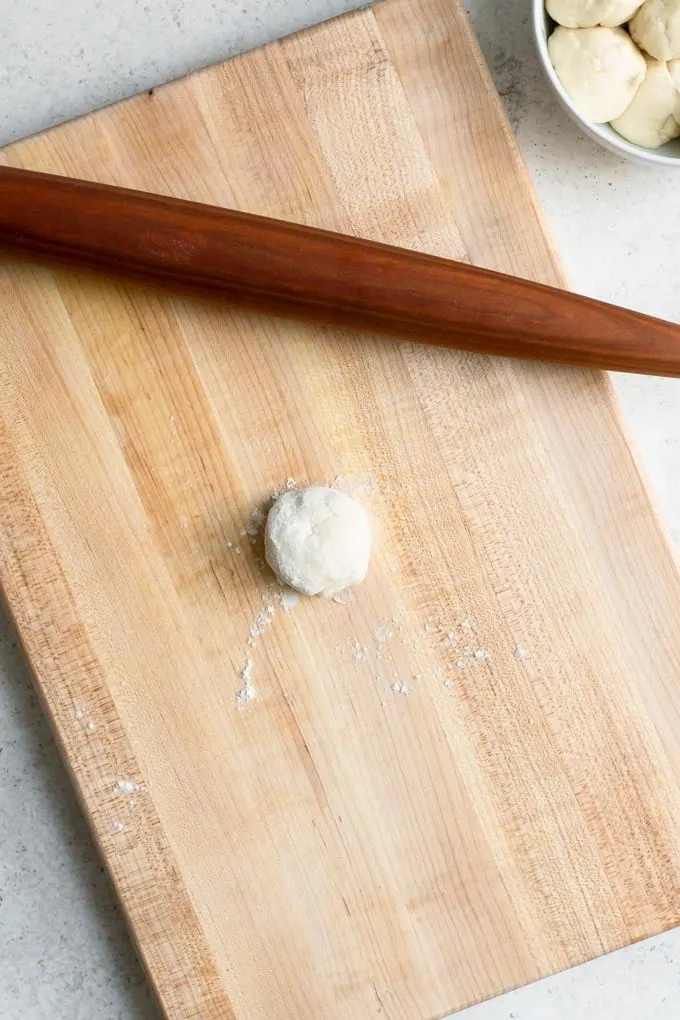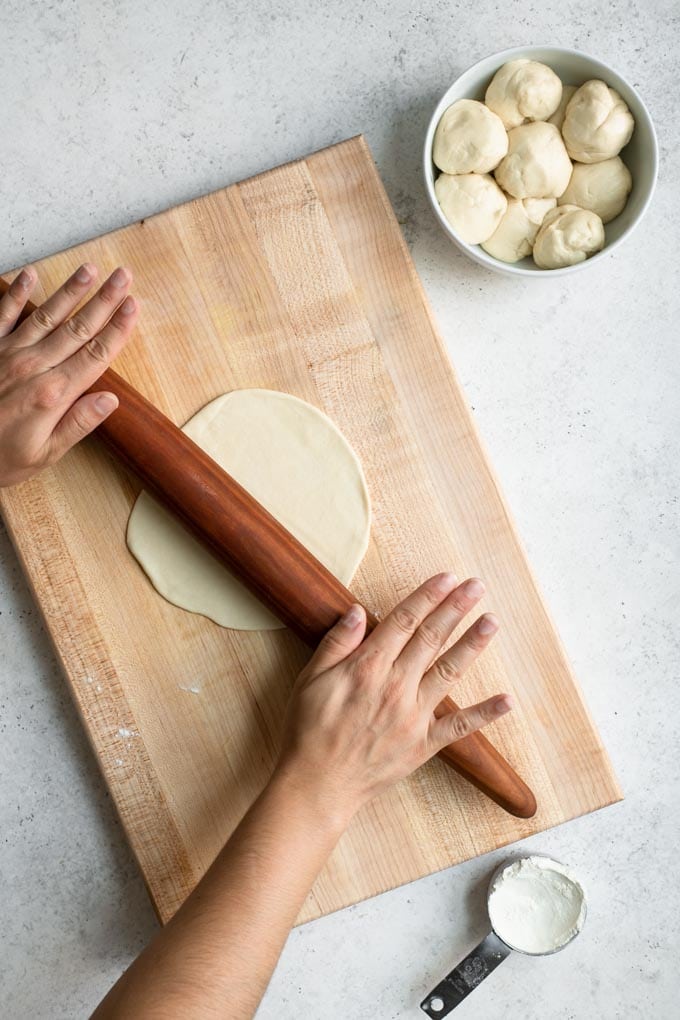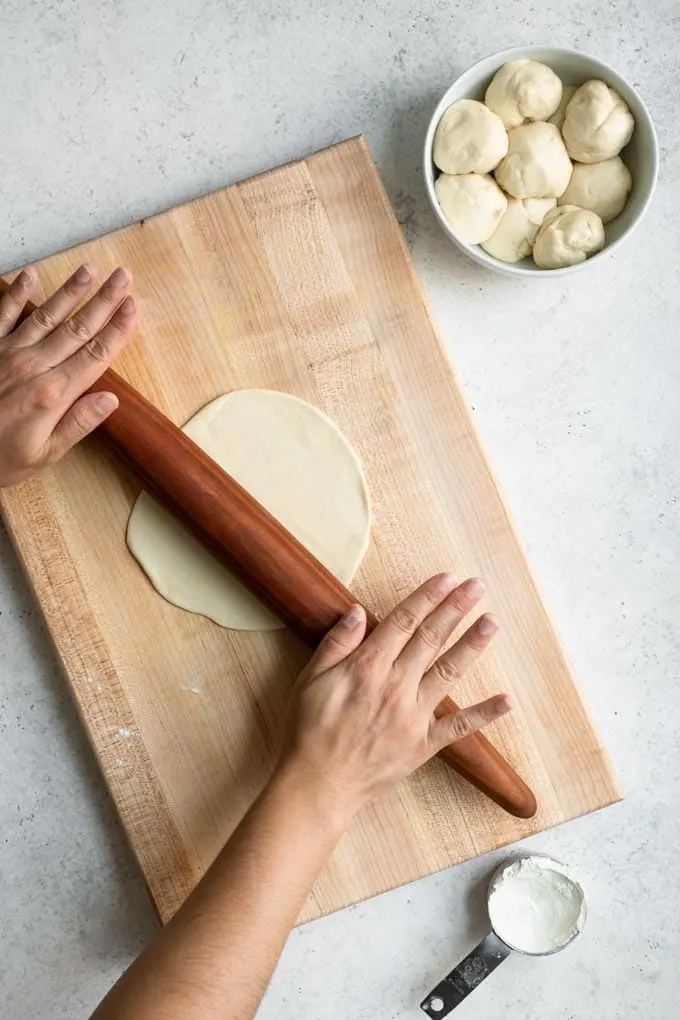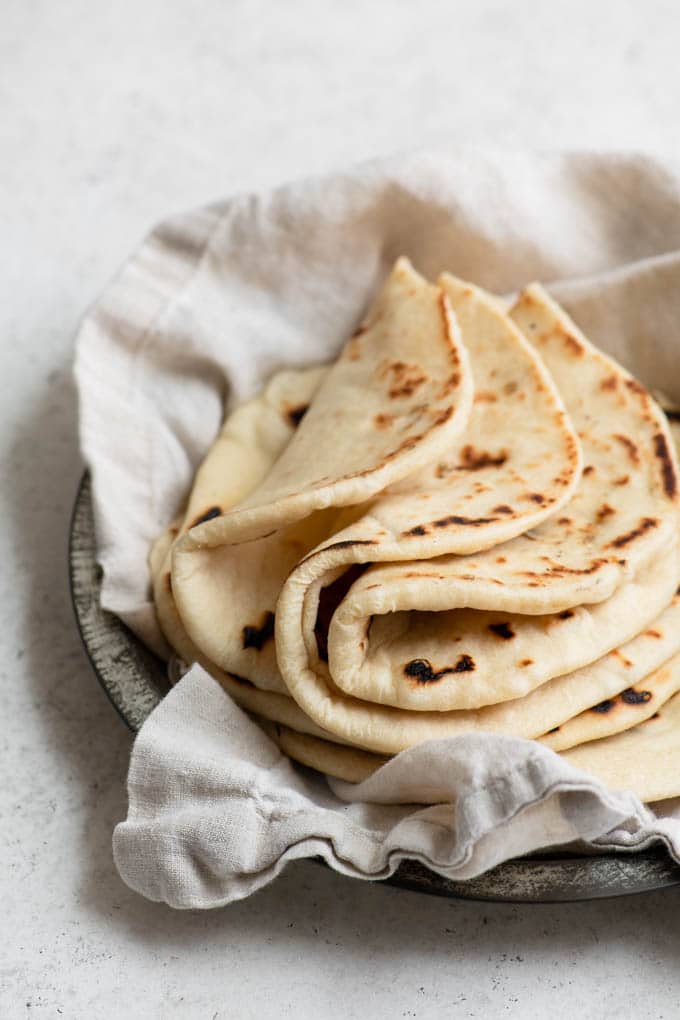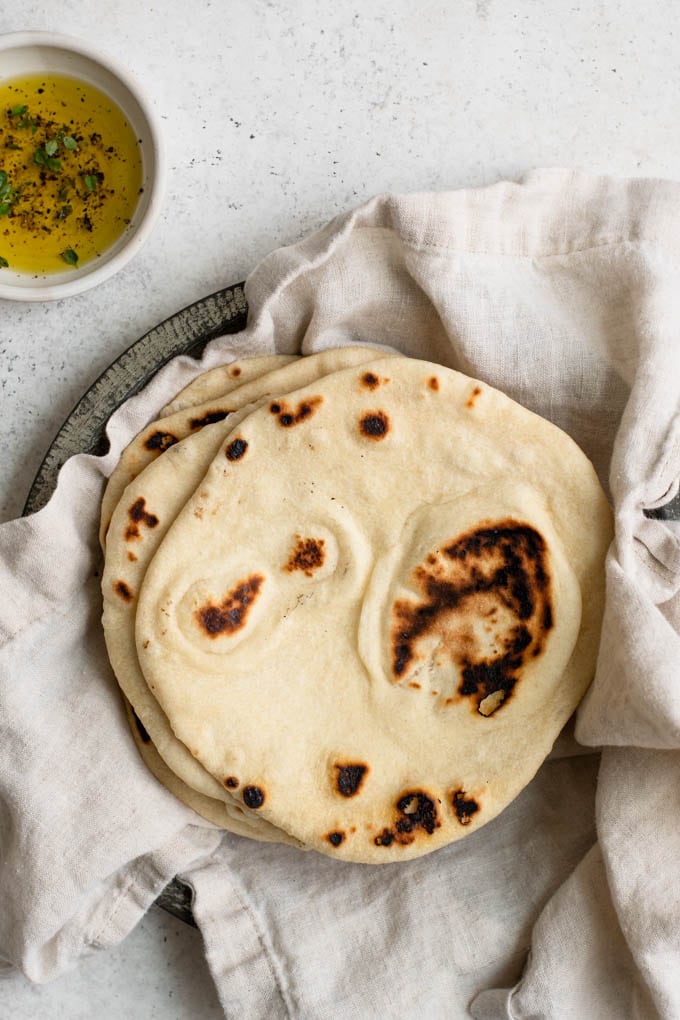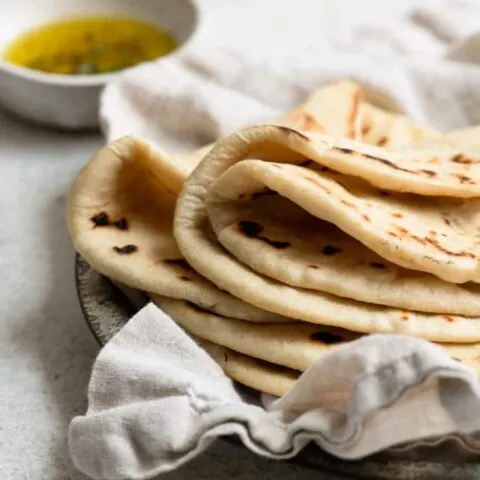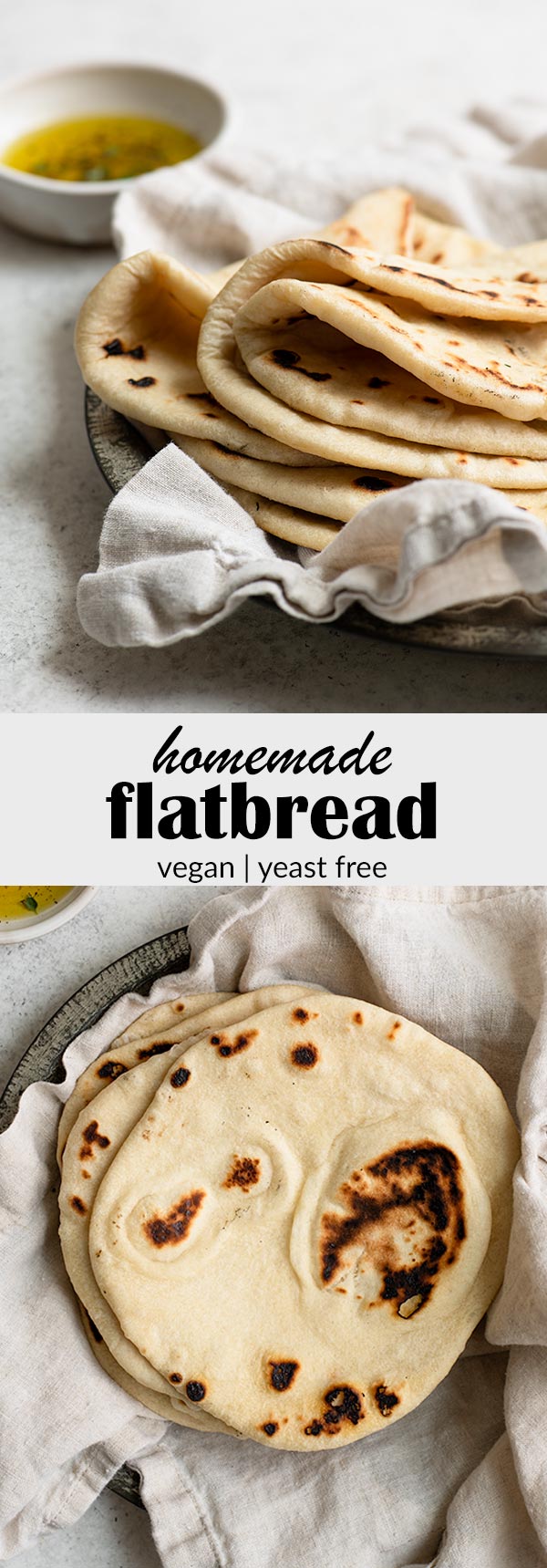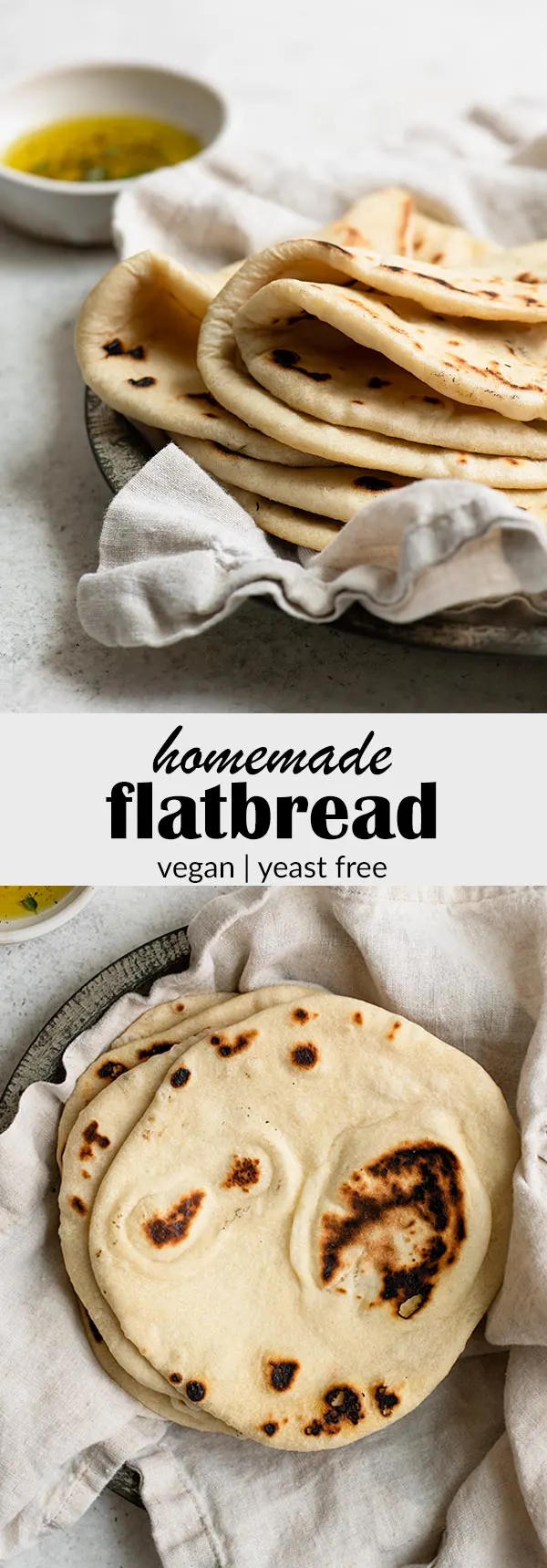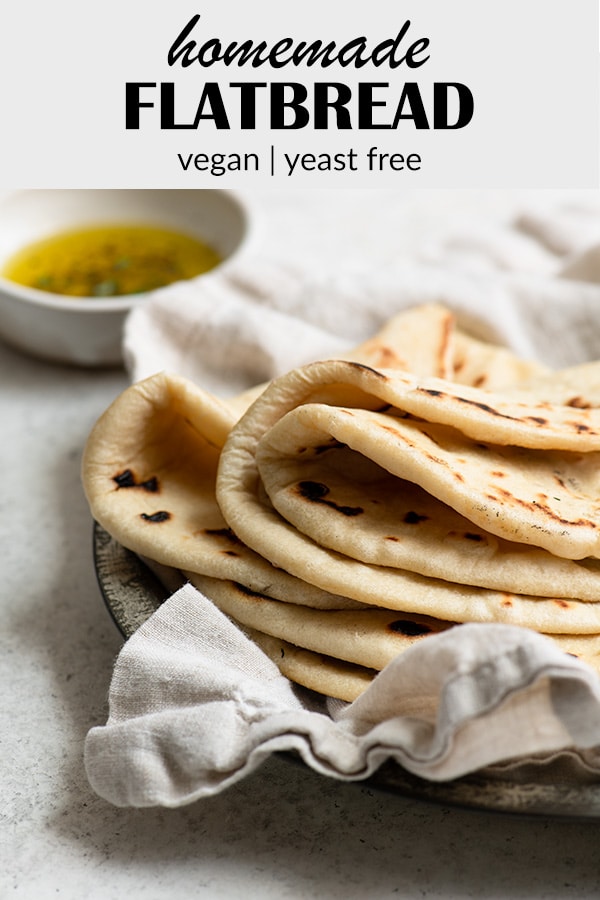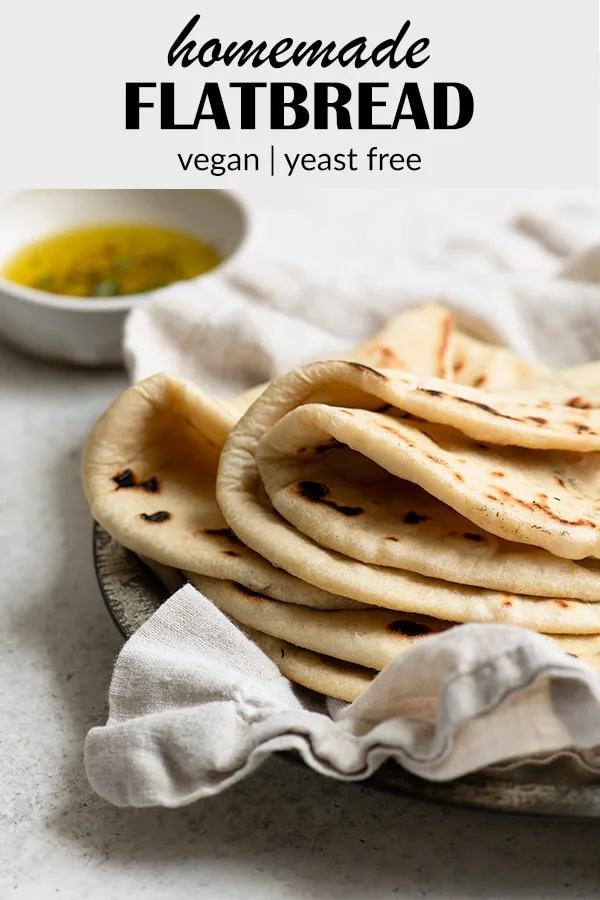When it comes to flatbread, I’m team make-your-own. Sure it’s a little bit of mixing and rolling and cooking, but if you’ve ever torn into warm, freshly cooked flatbread you get it. Store bought, pre-made flatbreads can’t hold a candle to the fresh homemade ones. I’m not above buying them, assuming I can even dairy free ones to fit my vegan diet, but usually enjoy them as a homemade treat. A good flatbread is something that can be enjoyed on its own, buttery and tender, but sturdy and flexible enough to hold up to rolling into a sandwich wrap or scooping up dips with torn pieces. A lot of cuisines have their version of flatbread, from Indian naan and roti (plus like 500 other kind) to Mexican tortillas, and pita to lavash to laobing (a Chinese flatbread). It seems like there are infinite ways to combine, roll out, and cook wheat doughs into flatbread. This recipe is sort of the middle ground of flatbread. Not too thick, not too thin, nothing fancy. Just good simple flatbread. My homemade flatbread is a 5-ingredient vegan flatbread. It’s yeast-free, which means it’s a flexible recipe, and doesn’t need to be made within a narrow window of time. It takes about 5 minutes to make the dough, 30 minutes to let rest (longer is ok), and a couple minutes to cook each bread stovetop. While the dough rests you can work on the rest of your meal, or take a nap!
The ingredients:
This section is short because you only need 5 ingredients to make this yeast-free flatbread!
Making the flatbread dough:
The key to good flatbread is to 1) start with quality ingredients, and 2) take care with the method. The first step is to whisk the dry ingredients together to combine and fluff up the flour. This will help keep your flatbreads fluffy and consistent. Next, rub the vegan butter (or oil) right into the dry ingredients. This step is fun because you can get right in there with your [clean!] hands. Rub the butter into the flour until it is crumbly. Rubbing the fat into the flour coats some of the flour with the fat which keep sit from forming too tough of a gluten network by “shortening” the dough. This helps keep the breads nice and soft. Add the water and mix it together to make a shaggy dough, then knead it until it makes a smooth dough. If kneading by hand it will take about 5 minutes. Knead it on a flour-dusted counter but try not to add too much flour, and only add it as needed. The dough will start hydrating during kneading and continue doing so during the rest, turning less sticky as it does so. If you have a stand mixer then it will knead in 3-4 minutes. After the stand mixer has had a go of kneading, transfer the dough onto the counter and knead a few times by hand so that you can make sure it doesn’t need any adjustments of extra flour or water. The final dough should feel smooth and supple, just lightly sticky but really sticking to your hands. Pour a little oil into the mixing bowl (or stand mixer bowl) and roll the dough ball in it to coat, then let rest while covered for a half an hour.
Resting the dough is an essential step.
During the rest the flour in the dough hydrates and the gluten network (which is the protein network that makes wheat breads bready) relaxes. The gluten relaxing is what lets you roll out the dough without having it fight you and snap back into a smaller size. You can let the dough rest for longer than 30 minutes, but a half an hour is really the minimum time you should let the dough rest. If you want it to go longer, place the dough in a sealed container in the fridge and use it any time in the next day. It may start to oxidize and get a greyish hue, but that won’t affect the taste.
Rolling and cooking the homemade flatbread:
Once your dough has rested, decide on the size you want your flatbreads. I’m giving instructions for a medium flatbread, about 6-inches in diameter. The dough can make:
10 five-inch flatbreads, with about 55g / 2oz balls of dough8 six-inch flatbreads, with about 68g / 2.5oz balls of dough6 eight-inch flatbreads, with about 91g / 3.25oz balls of dough
Divide up your dough depending on how large you want the flatbread and roll each piece into a ball. Keep them covered and work with one ball of dough at a time. Before rolling out the dough ball, dip it into flour and roll to coat. Then tap off excess flour and place on a clean counter, cutting board, or wood rolling board (called a chakla, this is a popular tool in Indian kitchens). Roll the dough out, picking it up and rotating regularly to roll evenly across it. You shouldn’t need to add more flour, but if it is sticky then add a light dusting of flour to the board and rolling pin. Once it reaches the size you’re going for (hint: they’re listed above and dependent on the size of dough ball you are using) then pick it up and transition it between your hands once or twice to allow any excess flour to fall of the dough. If this is too tricky, don’t worry about this step and get comfortable with handling the dough first.
Cook the flatbreads on a large skillet or griddle.
Preheat it over medium heat and do not add any oil. These are cooked “dry” which means that they are not cooked in oil! This is why you want to make sure you don’t have a floury dough, because any flour stuck on the rolled bread can burn on the pan. The flatbread will cook for about 2 minutes, one minute per side. If it is cooking too quickly turn the heat down, and if it’s taking too long to cook turn the heat up. It will start to puff in the center (or off to the side depending) and these air filled pockets will develop blackened spots when flipped as the bubbles take the brunt heat from the pan. It’s beautiful.
Steam the flatbreads:
Ok, this is probably the most important step of all–once the flatbreads are done cooking they need to be placed in a sealed container to steam. I use a tortilla warmer for this, but you can also use a casserole dish with a lid, or put it in a zip lock bag. Place a tea towel or a square of paper towel underneath the flatbreads or wrapped around them to collect excess moisture so they don’t get soggy. This steaming is what gives you foldable and rollable and super supple flatbreads. DO NOT SKIP! It also keeps your flatbreads warm while you cook up the rest and wait for the rest of your meal to be ready. You’ll want to let them steam for at least a minute, but just keep them in there while you cook the rest up and they’ll have plenty of time! And now that you have more information than you ever thought you’d need about flatbread, it’s time to go off and try making some! If you make these vegan homemade flatbreads, leave a comment below and rate the recipe on the recipe card. And please share your photos with me on Instagram, tag @thecuriouschickpea and #thecuriouschickpea. I love seeing your recreations! *substitute oil for the vegan butter, use refined (deodorized) coconut oil, canola oil or other neutral flavored oil, or olive oil instead. Store leftovers with a paper towel in a sealed container (like a silicon reusable bag or a ziplock bag) at room temperature for a day or a week in the fridge. Warm up in the microwave with a damp paper towel or on a warm skillet (cover to let steam).
